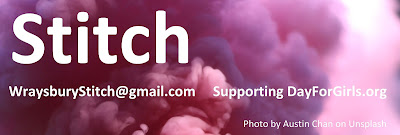2020 has been a funny year - we only managed a few meetings at the beginning of the year, and our distribution options changed (see https://wraysburystitch.blogspot.com/2020/07/11-new-distribution-guidelines.html)
But our lovely ladies have been working from home - sewing, cutting and overlocking as well as learning how to pack kits, measure knickers (!) and burrito folding knickers!!!
When people are able to travel safely, and ask for kits to take we will be ready!!!
But in the mean time ... (I am so excited about this)
"I've had a look at that link and it looks amazing! I know that the school don't deliver anything like that because they don't have that level of material to work with or that level of nursing/Obgyn training.
I would say that it really is worth it, not just because of the teaching that it will give to the girls but also because of the teaching it will give to the staff at the school to see what they could teach going forward. You would be doing more than giving the kits, you would be investing in school education for the benefit of the future girls coming through. The effects of that $130 will likely be multiplied many times over! Let me know what you decide to do and then if you do invest in the training, we'll also speak to the school afterwards to get their feedback on how they can then do the same for future girls"
So using the "teach a man to fish" philosophy I used $130 of the money to pay a distributor to do the training (for the girls and the staff) and I spent the rest of our £500 on the basic kits plus 2 extra liners and an extra pair of knickers for 67 girls.

































